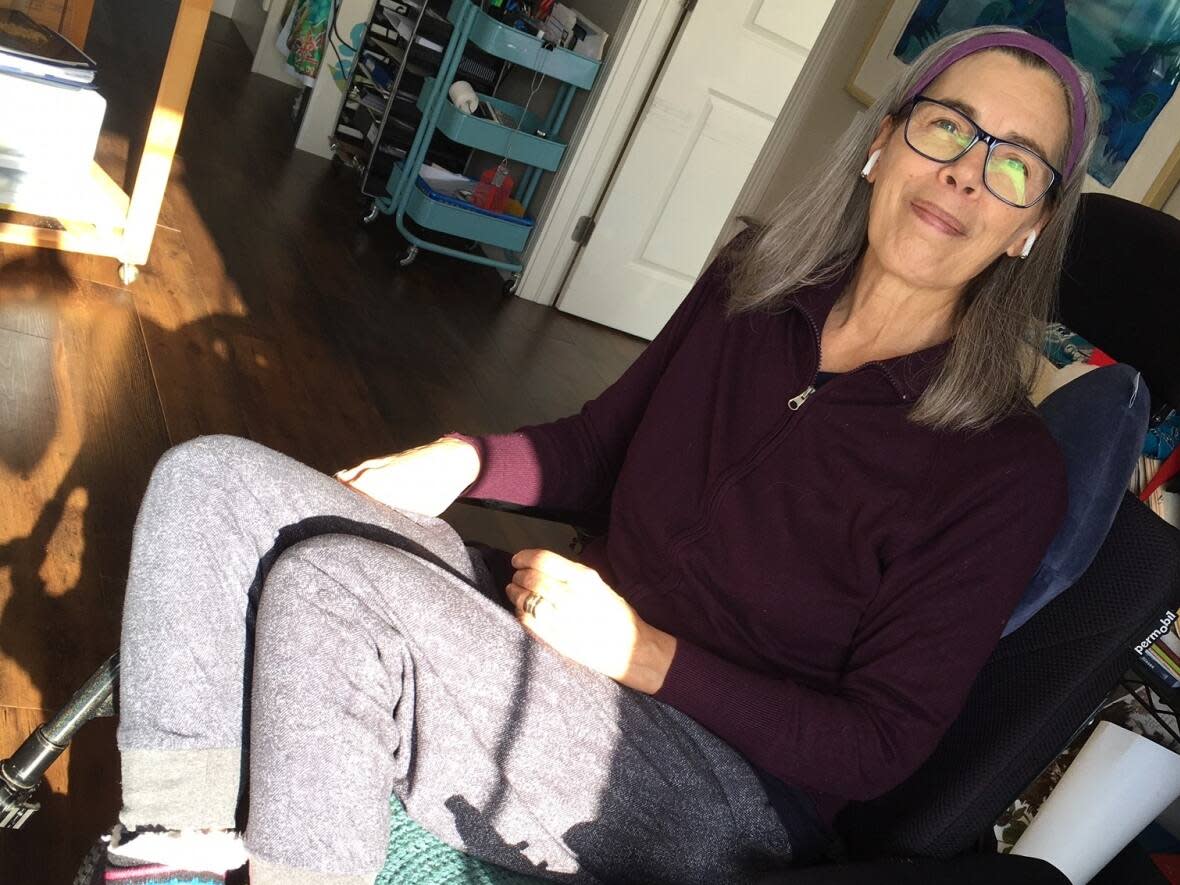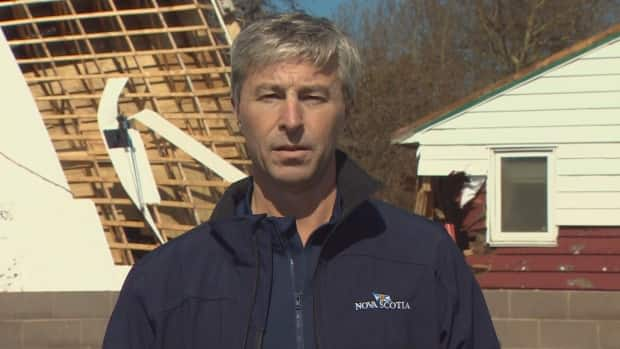N.S. disability advocate calls for vulnerable-persons registry after Fiona

Artist and disability advocate Anne Camozzi said in the wake of post-tropical storm Fiona, she felt disconnected from the rest of her community near Antigonish, N.S.
Camozzi uses a wheelchair and after the power went out in her home and her phones lines were rendered useless, she had only her radio to get updates on what was going on outside her home.
"First of all, the comfort centres weren't announced before the hurricane, then after the hurricane we had no telecommunications in order … to find out where those were," she told Jeff Douglas of Mainstreet this week.
"[Comfort centres] were at places like fire halls. How do I get there in my wheelchair when the only accessible transit people can't work because their houses have been damaged and they have no power?"
There was no thought given to helping disabled and elderly people in the aftermath of the storm, Camozzi said, something the government should look to change before another big weather event blows through Nova Scotia. In her view, a voluntary vulnerable-persons registry is one way the province could protect a large portion of the province's population.
"We have 30 per cent of our population that have identified as disabled, we have the biggest senior population in Canada and there's no planning for vulnerable populations," she said. "We need to put emergency planning in place for vulnerable people and that includes a vulnerable-persons registry. It works in other places, it would work here."
Lack of safety
Camozzi is just one of several people who have struggled amid power outages and property damage after Fiona.
Angus Campbell, who lives in Halifax, said his main concern during an outage while in his 10th floor apartment was safety.
"We can't really go down dark stairwells, most of our neighbours are seniors, a number of them are frail," he said. "Is EHS permitted to walk up flights of dark stairs to get someone? I don't know. If someone needed help, how would they get it at this point?"
Shirley O'Neill was also placed in a similar situation due to the storm. O'Neill lives in a senior's complex in Dartmouth and has multiple health conditions, including asthma and chronic obstructive pulmonary disease, which obstructs airflow from the lungs. Her conditions worsened in the week before the storm, she said, and in its aftermath, she was left struggling to breathe.
"Our backup elevator is working intermittently at best, and I'm in a wheelchair, so it's very unsafe for me to get on there," O'Neill said from her apartment. "I can't use the BiPap machine, I can't use my nebulizer machines, I can't use my air conditioner fan, all of which is important to my breathing."
A BiPap machine helps push oxygen into the lungs, while a nebulizer is used to deliver medicine directly to the lungs, she explained, neither of which work without power. O'Neill said she should have been in the hospital on Friday before the storm hit, "but I don't know how an ambulance would get to me."
It's these situations, Camozzi said, that could be avoided if the province had access to a registry, complete with locations, what kind of disabilities residents have and a personalized plan in case of emergencies.
Other jurisdictions have implemented a registry of sorts. Jeff Allison, coordinator of client services in IT with Waterloo Regional Police Services, said on Mainstreet the region's own vulnerable-persons registry is similar to the one Camozzi described.
The registry is a "collaborative effort" between police, the community and some third-party organizations, like the Alzheimer Society, Allison said. It allows people with loved ones with dementia, Alzheimer, communication issues and other medical concerns to enter information about the person — including special interests, pictures, specific challenges they may have and an address — that can be used to find and identify them in case they wander into the community.
"We have lots of great success stories where those that are vulnerable within the region have been able to be helped because of this," Allison added. "It truly is a community engagement to help in those types of scenarios."
Some locations in Nova Scotia do keep records of their vulnerable community members. The province published a guide to emergency preparedness for people with disabilities and older adults, which outlines some best practices to help people get ready in the case of a disaster, in September 2021. The guide mentions that "many municipalities now maintain a list of persons with disabilities and their needs."

After Fiona, Premier Tim Houston said the province would be offering an additional $250 on top of the $750 of the Seniors Care Grant and the extra funding would automatically be given to residents who already receive the grant.
Camozzi said the guide should've been more widely distributed ahead of the storm, as she didn't learn of it until several days after the storm hit the province.
And in her view, the lack of a registry betrays a lack of political will to make changes that would protect the province's most vulnerable residents.
"There is no neighbourhood check-in system. There's no senior check-in system. There is no planning for people with disabilities or vulnerable adults," Camozzi said. "This was our experience in COVID, and this is our experience in emergencies like hurricanes. We are definitely the forgotten population."
MORE TOP STORIES


